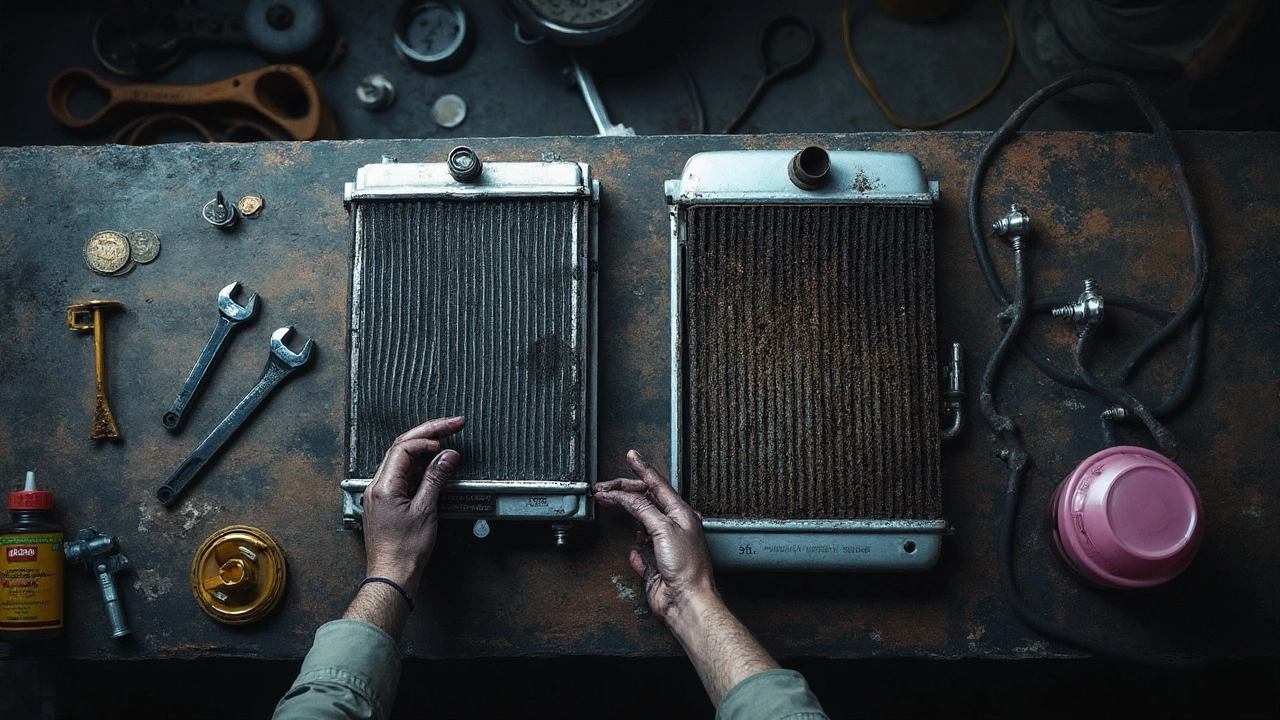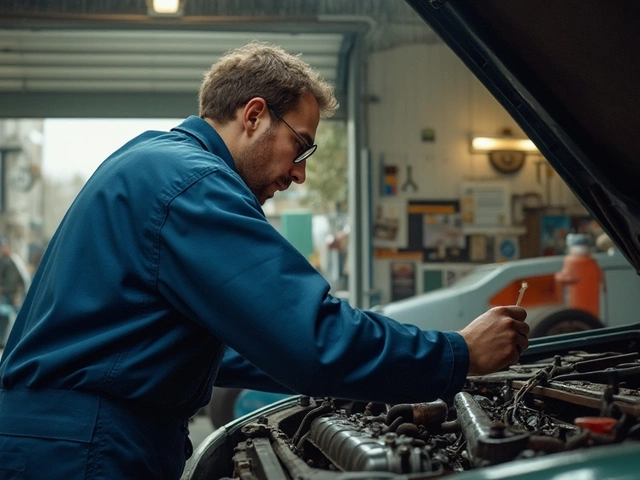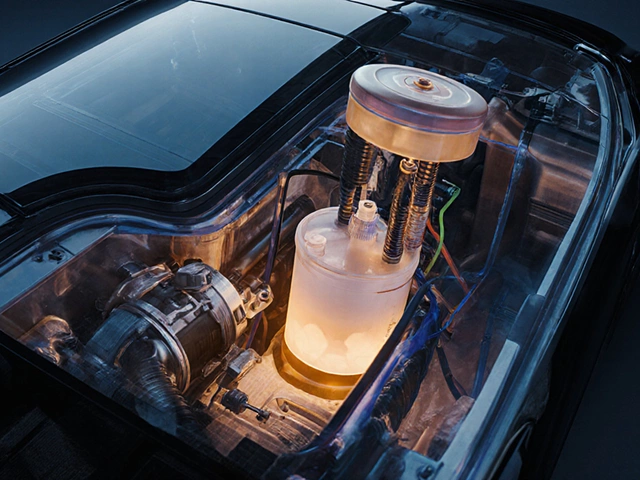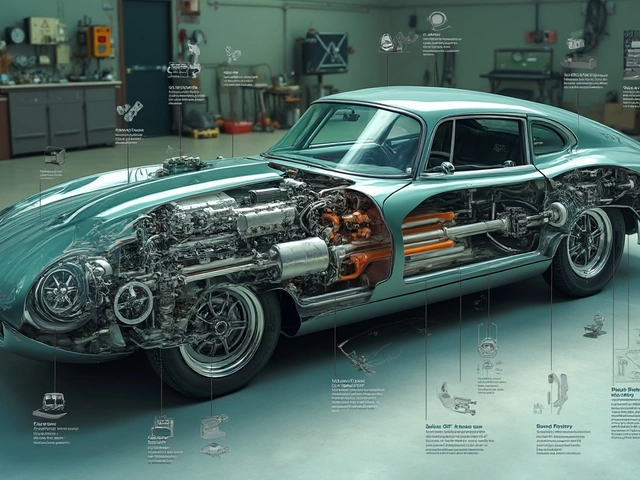Radiator prices are all over the place: you’ll see £60 on one site and £1,000+ for certain models, and the fitted bill can be triple the part cost. If you just want a straight answer for the UK in 2025, I’ve got you. Here’s what a radiator really costs today, why the number swings so much, and how to estimate your total before you call a garage.
TL;DR
- Part-only: £60-£300 for most mainstream cars; £300-£700+ for large, diesel, or performance models.
- Fitted: £250-£900 for most jobs; £900-£1,400+ on complex/performance vehicles or premium brands.
- Labour time: 1.5-3.0 hours for typical hatchbacks/saloons; 3-5 hours for big SUVs or performance cars.
- Labour rates: £60-£120/h at independents, £130-£200/h at main dealers (incl. VAT). Coolant/fluids/hoses can add £40-£150.
- Quick rule: Total = parts + (hours × hourly rate) + coolant/fluids + any hoses/thermostat. Always ask: “Is VAT included?”
UK Radiator Prices Explained: Parts, Labour, and What Changes the Bill
When people ask the price of a radiator, they usually mean the full replacement cost. That number depends on the part price, labour time, hourly rate, and a few easy-to-miss extras like coolant and hoses. If you want a single phrase that covers most searches in 2025, it’s this: car radiator price UK. Below are the ranges I see day to day in the UK, including VAT.
Part prices vary with size, material, and what’s built in. Many automatic and diesel models have integrated transmission-cooler sections. Those cost more and can add labour if your mechanic needs to handle ATF. Labour varies wildly by model: on some cars the radiator slides up and out; on others you’re removing the front bumper and the A/C condenser needs to be swung aside.
Here’s a grounded snapshot for 2025, using typical independent-garage rates in England, and labour times aligned with Haynes/Autodata style guides for common platforms. Dealer pricing is higher because of the hourly rate, not because the job is radically different.
| Vehicle type (examples) | Part price (aftermarket / OEM) | Typical labour time | Common hourly rate (independent) | Estimated fitted total (incl. VAT) |
|---|---|---|---|---|
| Small petrol hatchback (Fiesta, Corsa, Polo) | £60-£120 / £140-£280 | 1.2-2.0 hours | £60-£120/h | £220-£450 |
| Family hatch/saloon (Focus, Astra, Golf) | £80-£180 / £180-£350 | 1.5-2.5 hours | £60-£120/h | £280-£600 |
| Diesel or auto w/ trans cooler (Mondeo, Passat, 320d auto) | £120-£250 / £250-£500 | 2.0-3.0 hours | £60-£120/h | £380-£800 |
| Large SUV/pickup (Discovery, X5, Navara) | £180-£400 / £350-£700 | 2.0-4.0 hours | £70-£120/h | £450-£1,000 |
| Performance/special (WRX, M3, RS models) | £250-£600 / £600-£1,200+ | 3.0-5.0 hours | £80-£140/h | £650-£1,400+ |
What can push you above or below those ranges?
- Model complexity: Some cars need the front bumper and the “cooling pack” out. That adds hours.
- Automatic transmission: Radiators with built-in transmission coolers take more time and may need ATF top-up.
- Parts choice: Aftermarket plastic/aluminium radiators are cheapest. OE-branded units cost more. Full aluminium performance radiators are pricier again.
- Region and shop type: Independents in the South West often quote £70-£100/h; London can be £100-£140/h; main dealers £130-£200/h.
- Add-ons: Fresh coolant (£20-£60), hoses and clamps (£15-£80), thermostat (£20-£80), new cap (£5-£15), and sometimes a fan shroud or sensor clip if it breaks.
Note on VAT: UK consumer quotes should include VAT (20%). If the number looks too good, check if it’s plus VAT and fluids.
Credibility checks: AA and RAC both rank cooling issues among the most common summer breakdowns, which matches the uptick in seasonal jobs garages report. Labour windows above align with typical Autodata/Haynes values for modern compacts and SUVs. Materials costs eased after the 2021-2023 shipping spikes, but labour rates rose and stayed high in 2024-2025, which is why fitted totals haven’t dropped.
How to Estimate Your Radiator Replacement Cost (With Examples)
Here’s a simple formula that gets you to a realistic number before you ring anyone:
- Total fitted cost ≈ radiator part price + (labour hours × hourly rate) + coolant/fluids + extras (hoses, thermostat, cap)
Use this 7‑step process and you’ll be within 10-20% of most quotes.
- Identify the exact car. Year, engine, and transmission matter. Auto gearboxes often mean a pricier radiator. Have your reg or VIN handy.
- Pick your part tier. Aftermarket (cheapest), OE-equivalent (middle), or OEM/main dealer (most costly). Decide what you’re comfortable with.
- Check a labour guide. For most hatchbacks and saloons, figure 1.5-2.5 hours; big SUVs/performance 3-5 hours.
- Set an hourly rate. Independents: £60-£120/h. If you’re calling a dealer, use £130-£200/h.
- Add fluids. Coolant £20-£60. If auto transmission cooler lines are opened, allow £20-£60 for ATF top-up.
- Plan sensible extras. Aging hoses? Add £30-£80. Thermostat due? £20-£80. Radiator cap? £5-£15.
- Ask “what if” costs. If the A/C condenser must be moved, labour might add 0.5-1.0 hours. You don’t usually need an A/C regas unless a line is opened.
Examples you can sanity-check against local quotes:
- Ford Fiesta 1.0 petrol (manual), independent garage in Bristol: Aftermarket radiator £100, labour 1.8 h × £85 = £153, coolant £25, cap/odds £10. Estimated total ≈ £288. A dealer quote for the same job could be £420-£550 due to rate and OEM part.
- VW Golf 2.0 TDI (manual): Part £160 (aftermarket), labour 2.2 h × £95 = £209, coolant £30, hose kit £45. Estimated total ≈ £444. With OEM part (£300), you’d be ~£580-£650.
- BMW 320d auto (with trans cooler): Part £240 (aftermarket), labour 2.7 h × £100 = £270, coolant £35, ATF top-up £35. Estimated total ≈ £580. Dealer with OEM (£450) at £160/h would push this £900-£1,150.
- Land Rover Discovery 4: Part £320 (aftermarket), labour 3.5 h × £110 = £385, coolant £45, hose/clamps £40. Estimated total ≈ £790. OEM and dealer rates can nudge this past £1,100.
- Subaru WRX (performance, tight front end): Performance aluminium radiator £520, labour 4.0 h × £110 = £440, coolant £35, extras £30. Estimated total ≈ £1,025.
Why your estimate might still move:
- Hidden damage: A stone strike can nick the A/C condenser or a brittle fan shroud. If it breaks on removal, you’ll pay for a new one.
- Corrosion: Rusted hose clamps and stuck fittings add time. On older cars this is common.
- Bleeding and heat cycles: Some engines need extra care to bleed. A proper pressure test after fitting avoids comebacks but adds a little time.
Three quotes tip: When you call around, ask each garage to price the same part tier (e.g., Nissens/NRF aftermarket vs OEM). Otherwise, you’re not comparing apples to apples. Also ask them to itemise labour hours, coolant, and extras so you can line them up.

Repair vs Replace, OEM vs Aftermarket: Which One Should You Choose?
Can you fix a leaking radiator? If it’s a modern plastic/aluminium unit (most cars since the 2000s), repair isn’t usually worth it. Plastic tanks crack with heat cycles; once they go, they tend to go again. The old-school copper/brass radiators can be re-cored by specialists, but you rarely see those on modern passenger cars.
Stop-leak products? They can get you home, and that’s about all I’d trust them for. They can clog heater cores and small passages. If you must use it, treat it as a temporary emergency fix, then flush and replace the radiator soon after.
Here’s how I’d make the call.
- Age and mileage: Over 8-12 years old or 80k-120k miles? Replacement is usually the smart move.
- Location of the leak: Seam of the plastic tank or end cap? Replace. Pin-hole on metal fins from a stone? Replace. Only consider repair if you have a rare, all-metal unit.
- Overheating history: If the car overheated, the radiator might not be the only culprit. Check the cap, thermostat, water pump, fan operation, and for head-gasket gases in the coolant. Fix the cause, not just the symptom.
OEM vs aftermarket: what’s the trade-off?
- Aftermarket (good brands like Nissens, NRF, Mahle/Behr): Cheapest, widely available, usually 12-24-month warranty. Fit and performance are fine for daily drivers.
- OE-equivalent (same manufacturer as OEM but without the car brand logo): Often the best value, essentially the same spec without dealer pricing.
- OEM/main dealer: Highest price, sometimes 24-36-month warranty. Worth it on newish premium cars or where you want guaranteed fit and dealer stamp.
- Performance aluminium: Best for track or tuned cars; thicker cores, better heat rejection, but cost and sometimes more fan noise. Not necessary for normal commuting.
Risks and how to avoid them:
- Mixing coolants: Don’t mix OAT/HOAT or different colours blindly. Stick to the spec in your handbook. Mixing can gel and block passages.
- No flush: If the old coolant is brown or sludgy, ask for a thorough flush. New radiators can clog if you dump them into a dirty system.
- Air locks: Some engines trap air pockets. Proper bleeding and a pressure cap test prevent hot spots and callbacks.
- Trans fluid contamination: If your radiator has an integrated ATF cooler, make sure the garage uses the correct spec ATF and checks for cross-contamination.
- Warranty fine print: Many warranties require fresh coolant to spec and proof of correct fitment. Keep the invoice.
When to consider extras proactively:
- Hoses and clamps: If they’re soft, cracked, or swollen, change them now. You’ll pay less now than later on a separate job.
- Thermostat and cap: Cheap parts that fail often. If the car runs cool or overheats at random, it’s penny-wise to replace them while the system is open.
- Coolant type and interval: Fresh, correct-spec coolant protects your new radiator. Many modern coolants are long-life (5 years or 100k miles), but only if mixed right.
Signs a radiator is failing (so you’re not replacing the wrong part):
- Sweet smell and pink/orange/green residue on the radiator seam or lower corners.
- Temperature creeping up at idle but okay on the move (could also be fans or a partially blocked core).
- Low coolant with no visible leak (check for dried trails on the radiator, hose ends, and cap).
- Heater not blowing hot (can be air in system or clogged heater core; often shows alongside a restricted radiator).
A quick note on home heating radiators: this page is about car radiators. If you meant household heating, typical UK 2025 prices are £40-£200 for a standard panel radiator plus £150-£300 installation per radiator. Very different job, very different parts.
FAQ and Next Steps: When to Replace, How to Save, and What to Ask Your Mechanic
Can I drive with a leaking radiator? Not recommended. Small weeps might be manageable for a short, gentle trip with top-up coolant, but overheating can warp a head or blow a gasket. AA and RAC callouts spike in warm weather for exactly this reason.
Do I need an A/C regas after radiator replacement? Usually no. The condenser is in front and can be swung aside without disconnecting lines. If a line must be opened (rare for just a radiator), then yes, you’ll need a regas.
How long does a car radiator last? Often 8-12 years in UK conditions. Salt, stop-start driving, and poor coolant maintenance shorten life. Regular coolant changes and a healthy cap help a lot.
Is a dealer radiator better than aftermarket? Not automatically. Plenty of aftermarket radiators meet or exceed OE spec. On some premium models, OEM fitment avoids fiddly brackets or sensor mounts. That’s more about convenience than cooling performance.
Will stop-leak ruin my engine? It won’t ruin a healthy engine, but it can clog small passages and heater cores. It’s a “get me home” fix, not a repair. If you use it, plan a full flush and a proper replacement soon after.
What warranty should I expect? 12-24 months is common on aftermarket parts, sometimes 36 months on OEM. Labour warranty depends on the garage. Keep receipts and the part box label for proof of purchase.
Why did my quote include a thermostat and hoses? Because it’s cheaper to do them while the system is open. If your car is middle-aged and the hoses feel soft or the thermostat is original, this is smart preventative maintenance.
Do I need distilled water? Use premixed coolant or mix concentrate with deionised/distilled water as per your handbook. Tap water varies by region and can increase scale in hard-water areas.
What’s a fair hourly rate in 2025? Independents: £60-£120/h depending on region and tooling; main dealers: £130-£200/h. Ask if the quote includes VAT.
What should I ask my mechanic before booking?
- “Is the quote parts, labour, coolant, and VAT included? Itemised?”
- “Which brand of radiator are you fitting? What’s the warranty?”
- “Do you recommend hoses, cap, or thermostat while you’re in there? How much extra?”
- “Are there any known snags on my model (bumper off, condenser move, special bleed)?”
How can I save money without cutting corners?
- Choose a reputable aftermarket brand rather than dealer OEM for everyday cars.
- Use a trusted independent with a solid cooling-system track record.
- Book during weekdays and ask for a fixed price that includes VAT and fluids.
- Combine jobs: coolant service, hoses, and thermostat together so you pay labour once.
DIY or not? Replacing a radiator ranges from “easy Saturday” on simple hatchbacks to “front-end-off nightmare” on some SUVs and performance cars. If your car needs bumper removal, A/C condenser juggling, or has an awkward bleed, give it to a pro. If it’s a straightforward top-out job and you’re comfortable with drains, clamps, and bleeding, it’s doable with a service manual and patience.
Troubleshooting after a radiator change:
- Temp climbs at idle only: Check fan operation and air in the system. Re-bleed and test fans.
- Heater blows cold: Air lock or clogged heater core. Elevate the front of the car and bleed again.
- Coolant keeps dropping: Pressure test. Look for damp corners of the radiator, hose ends, and around the water pump.
- Milky ATF or ATF in coolant: Stop driving. The internal trans cooler may be compromised. You’ll need a new radiator and a transmission fluid service.
Next steps based on your scenario:
- Daily driver with a clear leak and no overheating: Book a replacement within a week. Ask for an aftermarket OE-equivalent radiator and fresh coolant. Expect £300-£600 on most mainstream cars.
- Premium/performance car: Decide OEM vs performance aluminium. Get a shop that knows your platform. Budget £700-£1,400 depending on access and parts.
- Older car with multiple weak hoses and a crusty cap: Do radiator + hoses + cap + thermostat. It’ll cost more now, but avoids two or three repeat jobs.
- Uncertain diagnosis: Pay for a pressure test and cooling system inspection first. It’s cheaper than guessing and throwing parts at it.
If you only remember three things: price depends mainly on parts tier and labour time, quotes should include VAT and fluids, and it pays to sort hoses and the cap while you’re in there. Do that, and you’ll get a fair radiator price-and a reliable fix.






